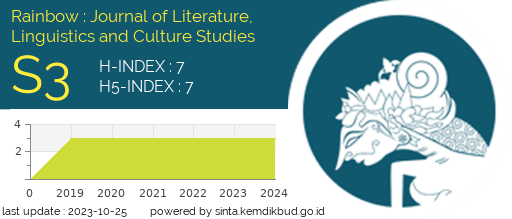Magical Children as Metaphors for Nonconformity: A Queer Reading of T.J. Klune’s The House in the Cerulean Sea
DOI:
https://doi.org/10.15294/rainbow.v13i2.5973Keywords:
gender performativity, metaphor, queer, queer readingAbstract
Fantasy is a literary genre that can provide a platform for marginalized voices to subvert dominant cultural norms and often address larger, sensitive, and complex societal issues. Thus, making queer authors utilize this genre of writing to explore and represent diverse identities and experiences. This study dives into the profound fantastical world of TJ Klune’s The House in the Cerulean Sea to uncover its depiction of magical characters as representation of real-world gender nonconformity. Drawing upon the foundational theories of queer theory, particularly Judith Butler’s theory of gender performativity, this research study scrutinizes how the novel subverts and challenges the prevalent paradigm of heteronormativity. This research employed the method of qualitative data analysis to obtain precise data. The findings reveal that the depiction of the three magical children in The House in the Cerulean Sea, Talia, Chauncey, and Theodore, embodies the concept of gender nonconformity in the real world. Ultimately, this research highlights the whimsical narrative of The House in the Cerulean Sea that serves as a platform to explore and affirm the complexities of gender beyond binary norms, advocating for a world where all identities are embraced and celebrated.
Downloads
Published
Article ID
5973Issue
Section
License
Copyright (c) 2024 Marintan Bening Symphony, Rizal Octofianto Datau (Author)

This work is licensed under a Creative Commons Attribution 4.0 International License.






